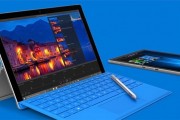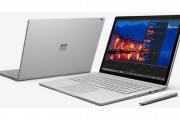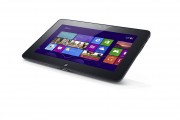The word of 2007 is “multi-touch“. It’s everywhere, from the iPhone to the Microsoft Surface. We weren’t happy with just one finger on the touch-sensitive screens, we wanted to put all 10 fingers and probably some toes on too, and multi-touch was born.One of the most memorable and widespread demonstrations of multi-touch technology is probably the TED presentation by Jeff Han in 2006. I don’t know exactly why but his prototype has become the benchmark for multi-touch technologies. However if I recall correctly, the iPhone is the only portable device that could achieve the desired effect without the bulky equipment required in many other setup such as the Surface. But the fallback being skin-sensitive only, an issue to those with big hands who wants to use their nails or disabilities.Steve Hodges’ multi-touch laptopThe idea of having a multi-touch-capable laptop sounds pretty sweet, but of course no one would want to carry a cathode-ray-tube in their backpack, so how do you come up with a solution for a screen less than an inch thick? Microsoft Research Cambridge’s Steve Hodges might have the answer.Steve’s solution is remarkably simple yet effective. With an off-the-shelf laptop, he retrofitted some infrared sensors on the back and together with the magic of software, you have multi-touch! Check out the following video clip (excerpt from MSR Cambridge video) to see his demonstration. It has all the dragging and pinching demos you’d expect to see in every multi-touch display, so don’t expect to be blown away.
Granted the sensors are a little thick at the moment and only affect a portion of the screen, but it’s dead simple and presumably just as cheap. Obviously with some more work on the production and aesthetics side of things (no one wants a hole in the back of their screen), this could become a mainstream solution.In addition, because he uses infrared technology, an added enhancement is the ability to pick up infrared signals from a standard remote. There’s nothing exactly new about remotes and laptops, several on the market already use built-in remotes for media browsing activities. However again, this could drive the technology mainstream and spark a whole wave of do-it-yourself infrared hacks for computers.Having said all that, the rate at which Microsoft Research projects are realized is not exactly fast or even promising for that matter. I hope this one picks up some pace and interest from computer manufacturers so all of us can twist and pinch pictures on our laptops in the near future.
Source:Istartedsomething.com


